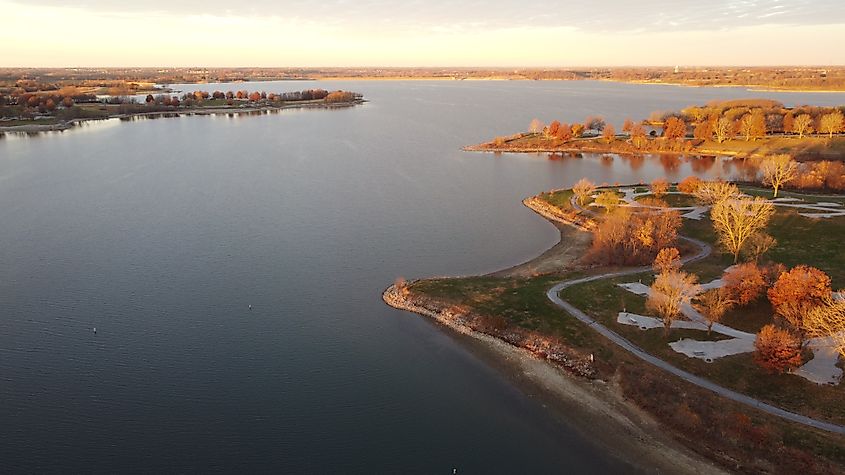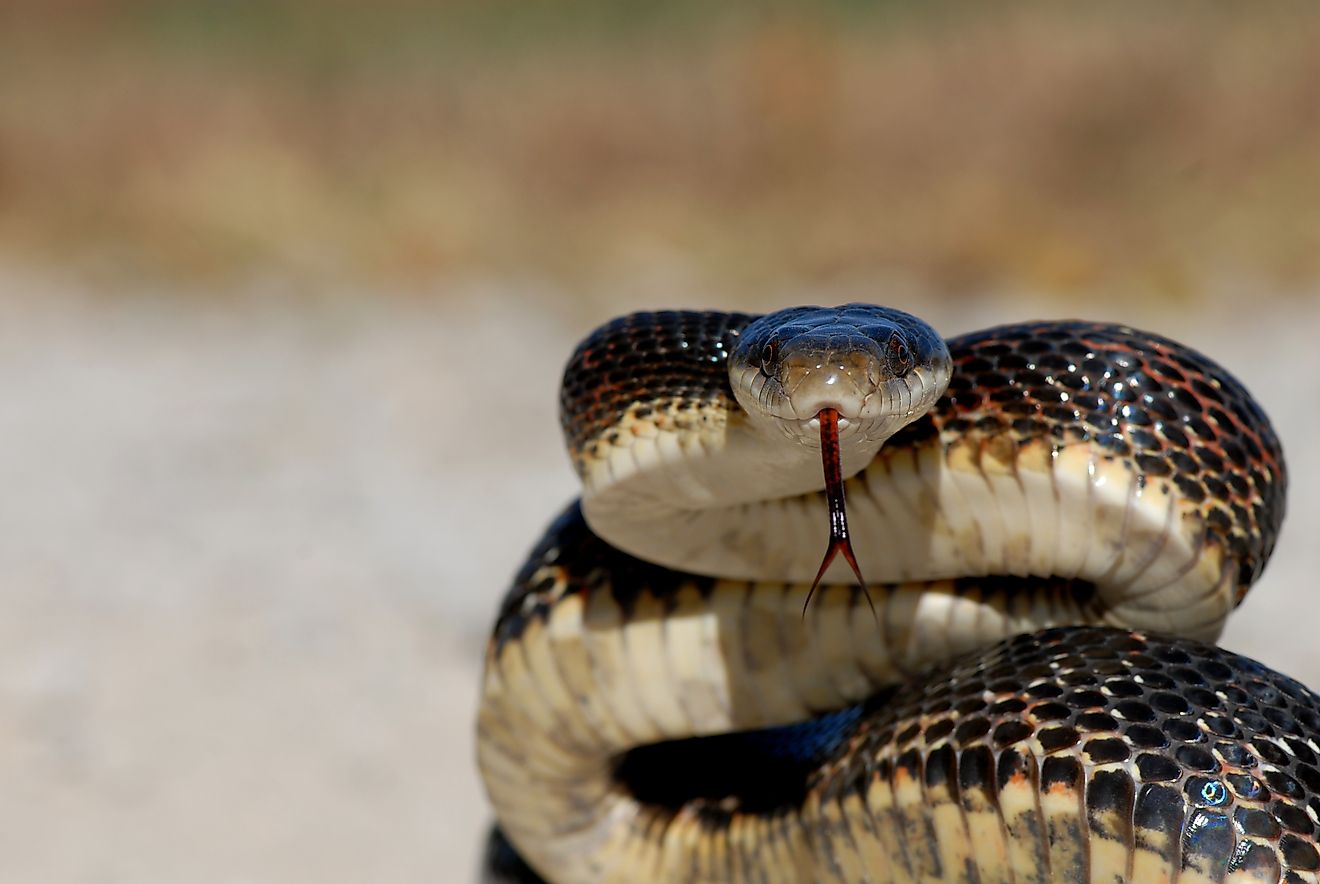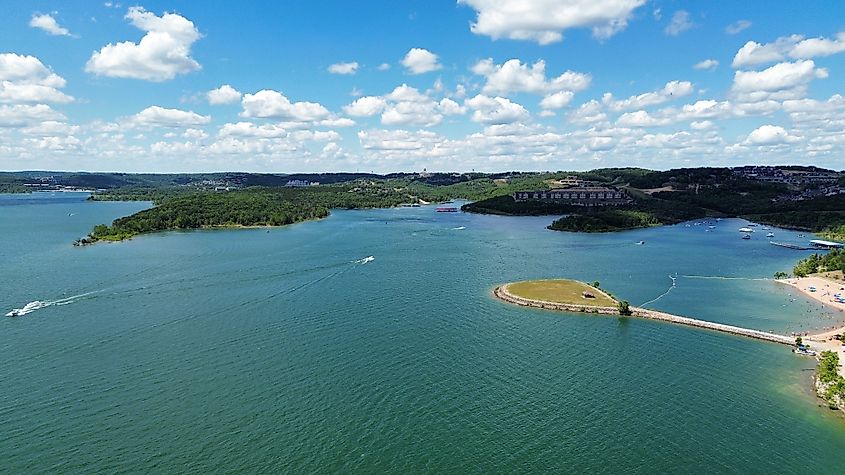Smithville Lake, a formerly peaceful retreat just north of Kansas City, has recently been thrust into the spotlight for an unsettling reason – it’s rapidly becoming one of Missouri’s most snake-infested bodies of water. Local residents and visitors have reported increased snake sightings along the lake’s 175-mile shoreline, raising concerns about safety during recreational activities. Wildlife officials confirm that Smithville Lake has climbed the rankings of snake-populated lakes in the state, second only to the notorious Table Rock Lake in southwestern Missouri.
The timing of this development coincides with Kansas City’s expanding urban footprint, as more residents move to the metropolitan area and development pushes further into previously undisturbed natural habitats. Environmental experts note that while snake populations have always been present at Smithville Lake, the increased human activity and habitat disruption have made encounters more common. The 7,000-acre reservoir, created in the late 1970s, has become a focal point for both outdoor enthusiasts and wildlife, creating an uncomfortable intersection between residents seeking recreation and the lake’s increasingly visible reptilian inhabitants.

- Smithville Lake at sunrise: Beauty with a cautionary tale of wildlife awareness. Source: worldatlas.com
Visitors to Smithville Lake should be particularly vigilant about two venomous species that call the area home: the eastern copperhead and the timber rattlesnake. The eastern copperhead, recognized by its distinctive hourglass-shaped crossbands and copper-colored head, poses a significant danger. These snakes can reach lengths of two to three feet and are known for their occasionally aggressive behavior when they feel threatened. Unlike other snake species that typically flee at the sound of approaching humans, copperheads may stand their ground or even advance if they perceive a threat to their territory.
The timber rattlesnake, though less commonly encountered, presents an even more serious threat due to its potent venom and large size, sometimes growing to five feet in length. Identifiable by its distinctive rattle and banded pattern, these snakes prefer the wooded areas surrounding the lake. While generally less aggressive than copperheads, they will strike if cornered or surprised. Local herpetologists note that both species are most active during warmer months, particularly during morning and evening hours when temperatures are moderate. Their presence has become a growing concern for families who frequent Camp Branch Beach and Little Platte Beach, two popular recreational areas at the lake.

- A graph showing the most snake-infested lakes in Missouri, with Smithville Lake rising in the ranks. Source: worldatlas.com
While Smithville Lake’s snake population is growing, it still hasn’t reached the concentration levels found at Table Rock Lake, which remains Missouri’s most snake-infested body of water. Table Rock Lake boasts a larger variety of snake species and a more established reptile ecosystem across its 43,000-acre surface. However, wildlife biologists are noting concerning trends at Smithville, where the snake population density is increasing at a faster rate than other comparable lakes in the region.
The explanation for this trend appears to be directly connected to Kansas City’s urban expansion. As development projects push northward from the metropolitan area, natural habitats are fragmented, forcing wildlife, including snakes, to concentrate in the protected areas around Smithville Lake. Additionally, the lake’s diverse ecosystem of forests, grasslands, and shoreline provides ideal habitats for various snake species. The warming climate has also extended the active season for cold-blooded reptiles, giving them more time to reproduce and establish territories around the lake, further contributing to the growing population density that residents and visitors are now noticing.

- Table Rock Lake, known for its snake population, contrasts with the escalating situation at Smithville Lake. Source: worldatlas.com
For residents and visitors concerned about potential snake encounters, the Smithville Lake Nature Center has become an invaluable resource. Located in the Kelsey Short Youth Group Camp area, the center offers educational programs specifically designed to help visitors understand and safely coexist with the lake’s wildlife, including its serpentine inhabitants. The nature center houses more than 15 live animal species and numerous exhibits that highlight Missouri’s diverse ecosystem, providing visitors with the knowledge to identify different snake species and understand their behaviors.
Safety experts at the nature center recommend several precautions for lake visitors, including wearing closed-toe shoes when hiking, staying on established trails, and using walking sticks to alert snakes of your presence before you get too close. If you do encounter a snake, they advise remaining calm, giving the animal plenty of space, and slowly backing away without making sudden movements. For those planning extended visits, the center offers scheduled on-site and off-site nature programs that can be arranged for families or groups by calling (816) 407-3400. These educational opportunities are particularly valuable for newcomers to the area who may be unfamiliar with the wildlife that shares this popular recreational space.

- Smithville Lake at sunrise: Beauty with a cautionary tale of wildlife awareness. Source: worldatlas.com
